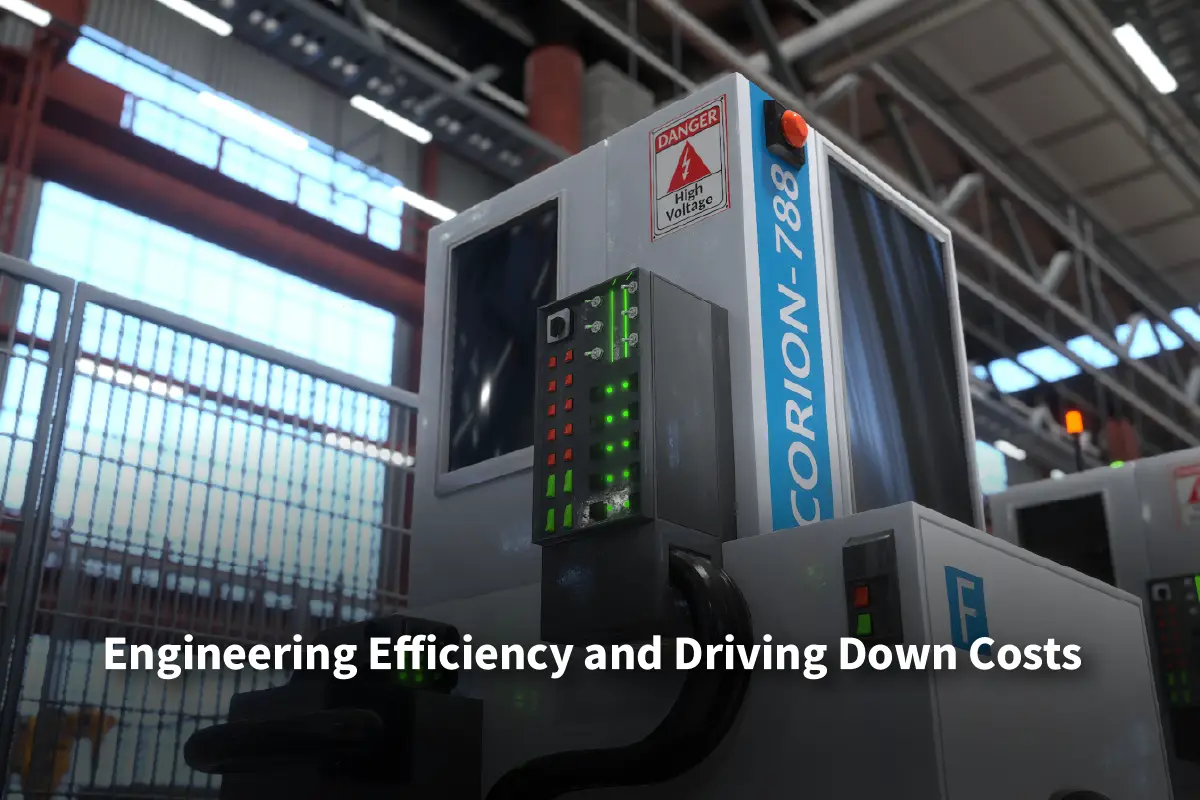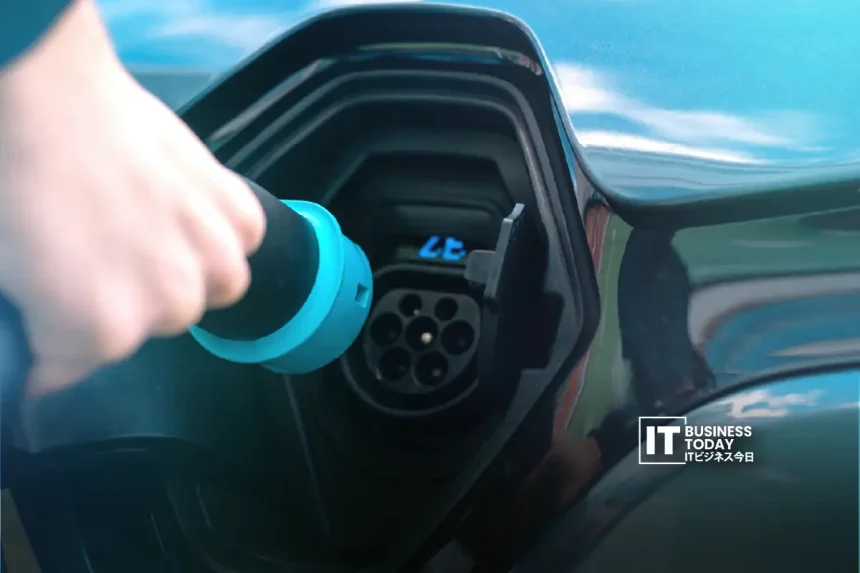For years, everyone agreed that battery electric vehicles (BEVs) were essential for a zero-emission future. Japan’s car giants, like Toyota, Honda, and Kawasaki, kept promoting hydrogen. They stayed focused despite the surrounding noise. Japanese engineers improved fuel cell stacks. They gained expertise quietly, even as BEVs advanced. New technology, strategic needs, and gained experience are driving a strong comeback. Japanese carmakers are betting big on hydrogen once more, but this time, it’s different. This time, they are armed with an unprecedented ally: Artificial Intelligence. This renewed commitment isn’t nostalgia; it’s a calculated, AI-optimized strategy for sustainable leadership.
The Enduring Allure of Hydrogen
The appeal of hydrogen fuel cell electric vehicles (FCEVs) is still strong. This is especially true in areas where battery power has clear limits. The main benefit is simple: fast refueling like gas. Plus, you can drive over 500 kilometers. This helps ease ‘range anxiety.’ This concern still impacts some people when they choose BEVs. This is especially true for commercial fleets and long-haul transport. Hydrogen fuel cells only emit water vapor. This helps meet global decarbonization goals. Japan has few energy resources and relies on imported fossil fuels. Hydrogen can help create energy security and independence. This is especially true when it’s made from renewable sources or low-carbon methods.
The first wave of hydrogen excitement hit major obstacles. The high cost slowed adoption. This let BEVs gain early momentum in the passenger car market. Global FCEV sales fell from 20,704 in 2022 to just 14,451 in 2023, and further to approximately 12,866 in 2024. Yet Japan’s domestic market showed resilience, FCEV sales doubled from 202 to 440 units in 2024, indicating strong local support for the technology.
Engineering Efficiency and Driving Down Costs

The key difference in this second hydrogen wave is the power of Artificial Intelligence. Japanese automakers aren’t just making fuel cells anymore. They are now using AI and machine learning to control them with amazing precision. This technological infusion tackles the core historical weaknesses head-on:
Optimizing the Heart: Fuel Cell Stack Performance: Designing and running a fuel cell stack involves many complex factors. These factors are temperature gradients, humidity levels, gas flow rates, catalyst wear, and membrane integrity. AI algorithms use large datasets from real-world operations and advanced simulations. They now optimize these parameters in real-time. Picture AI always adjusting the fuel cell’s performance. It boosts power output and reduces wear. This way, it extends the lifespan of components and greatly enhances system efficiency. This means better performance, longer durability, and importantly, lower costs. You save money by using less material and enjoying longer service intervals.
Predictive Power: Maintenance Revolutionized: Unplanned downtime is problematic for commercial fleet operators. AI is enabling a shift from reactive to predictive maintenance for FCEVs. AI can spot potential failures by analyzing sensor data. It looks at subtle vibrations, tiny voltage changes, and shifts in gas composition. This way, problems can be detected before they occur. This enables scheduled maintenance. It helps avoid expensive breakdowns on the road. A trucking company can now plan routes and maintenance with more confidence in vehicle uptime.
Materials Science Accelerated: Finding better catalysts or stronger membrane materials can take years of lab work and many trials. AI is dramatically accelerating this process. Machine learning models can quickly screen millions of material combinations. They predict properties and performance, helping researchers find the best candidates faster. This fast iteration cycle is crucial for creating next-gen fuel cells. These cells will be cheaper, more powerful, and last longer.
Demand Forecasting and Infrastructure Synergy: Building a hydrogen refueling network requires massive investment. AI plays a vital role beyond the vehicle itself. Smart algorithms check fleet use, planned vehicle deployment, regional logistics, and renewable energy forecasts. They help decide where to place and how big to make hydrogen refueling stations. This data-driven method makes sure we build infrastructure where it’s needed most. This way, we maximize use and boost returns for infrastructure providers.
Also Read: Next-Gen Batteries: How Japan Is Charging the Future of Electric Vehicles with Solid-State Tech
Infrastructure
Japan knows vehicles aren’t enough. So, there’s a strong effort to create a hydrogen ecosystem. This push is driven by data and careful planning.
Government-Backed Momentum: Japan’s national hydrogen strategy is among the most ambitious globally.
The government provides large subsidies for several key areas:
- Setting up refueling stations
- Researching green hydrogen production with renewable energy
- Running pilot projects for hydrogen in heavy industry and power generation
This creates a fertile ground for private investment. METI has allocated ¥46 billion for hydrogen-powered trucks and buses, subsidizing up to ¥700/kg of hydrogen, covering approximately 75% of the cost gap compared to diesel.
Japan currently has many hydrogen refueling stations, with Iwatani Corporation alone operating 51. The government plans to scale this to 1,000 stations by 2030.
Keiretsu Collaboration: The traditional Japanese industrial model shines here. Automakers are working closely with energy companies like Iwatani and ENEOS. They’re partnering with industrial gas producers and heavy machinery makers. One example is Komatsu, which is exploring hydrogen construction equipment. Additionally, trading houses are part of this collaboration. This holistic approach tackles production, distribution, storage, and utilization simultaneously. AI-driven logistics models improve hydrogen transport routes. They use pipelines, special trucks, and ships to import green hydrogen internationally.
Focus on Heavy Hitters First: This effort targets sectors where batteries aren’t practical. Heavy-duty trucks, buses, and forklifts are important targets. Toyota has a strong market share in forklifts. Maritime vessels and stationary power generation also fit into this category. These applications usually have set routes and centralized refueling. This makes it easier to roll out the initial infrastructure. Success here scales up, lowers hydrogen costs, and sets a tested operational model. This happens before we expand into passenger vehicles.
Japan’s Strategic Imperative

Japan’s renewed focus on hydrogen isn’t just about technology. It’s part of the country’s industrial strategy and competitive edge.
Japan has decades of strong experience in fuel cell technology and hydrogen handling. This creates a big advantage. Japan is doubling down on hydrogen, boosted by AI. This helps the country stay a leader in advanced technology. Japan has valuable intellectual property in this area. Japan is focusing on hydrogen. It is not competing in batteries since others have moved faster.
Economic Engine: Leading the hydrogen value chain has great economic potential. This includes making electrolyzers, producing fuel cells, and integrating systems. It creates high-value jobs and boosts exports. It also makes Japanese companies key suppliers in the rising global hydrogen market.
Energy Security Diversification: Hydrogen, especially ‘green hydrogen,’ is key. It can be made at home using solar or offshore wind. Or, it can come from countries rich in renewables. This helps reduce reliance on unstable fossil fuel imports. AI helps improve renewable hydrogen production and its integration into the grid. This boosts security.
The BEV Reality: BEVs matter, but Japanese car makers understand that one solution for decarbonization isn’t enough for all. Different markets and applications demand different solutions. Hydrogen offers a helpful option, especially for key sectors in the Japanese economy, such as logistics and heavy industry. Investing in both technologies hedges their bets and broadens their market reach.
Challenges and the AI-Enabled Horizon
The path forward, while promising, is not without obstacles. The cost of green hydrogen production needs to fall significantly. Scaling up the refueling infrastructure requires sustained, massive investment and cross-industry coordination. Public perception and awareness need bolstering. Global standards for hydrogen safety and transportation require further harmonization.
Yet, the integration of AI fundamentally changes the calculus. AI helps the hydrogen industry. It lowers fuel cell costs, boosts durability, and enhances efficiency. Also, it speeds up innovation in materials. It also helps optimize infrastructure deployment. This makes hydrogen more viable and competitive. We are moving beyond prototypes towards commercially scalable solutions.
A Calculated, Intelligent Bet for Sustainable Leadership
Japan’s car makers are not stepping back from electrification. Instead, they are broadening what it means. Their strong focus on hydrogen, powered by Artificial Intelligence, highlights their long-term vision and unique strengths. It’s a recognition that achieving true decarbonization requires a multi-pronged approach.
For Japanese business leaders, the implications are profound. This is not only about transportation. It also concerns Japanese industry, energy security, and tech independence. Investing in AI fuel cell research, green hydrogen production, and infrastructure is creating a new industrial ecosystem. Logistics, energy, manufacturing, and tech companies should watch this space. They should look for chances to collaborate and generate fresh ideas in the growing hydrogen value chain.
The quiet hum of the hydrogen fuel cell is more than an alternative powertrain. It is smartly managed by advanced algorithms. It shows Japan’s commitment to creating a sustainable future. They will use their years of experience with AI to tackle past challenges. This second bet on hydrogen is smarter and more advanced than the first. It’s also more important strategically. It’s a bet on efficiency, strength, and lasting leadership in the global clean energy shift. Japan is giving the silent engine a powerful digital brain. They’re taking charge.







